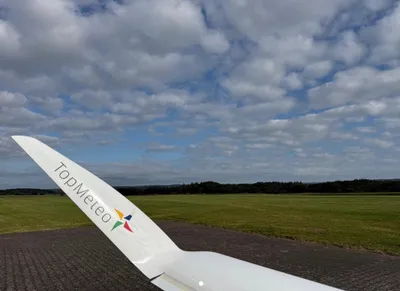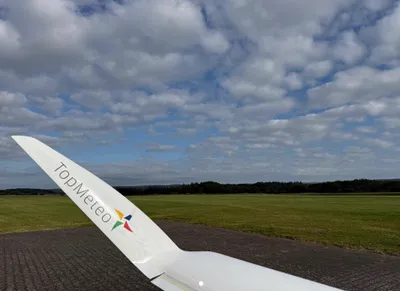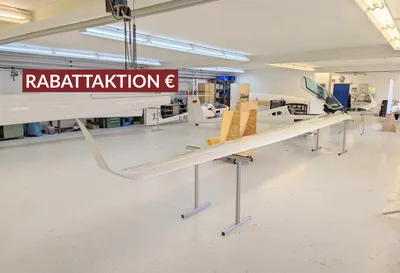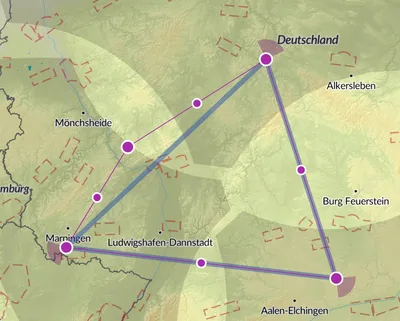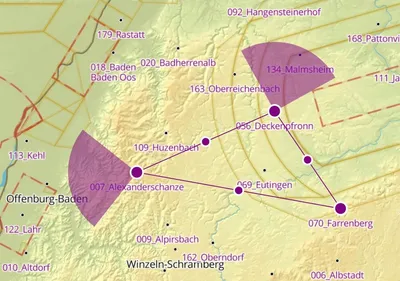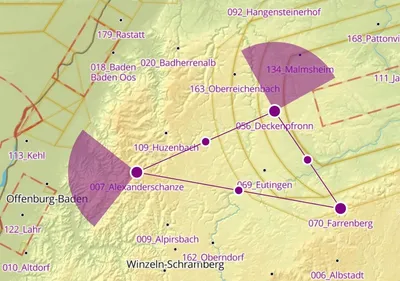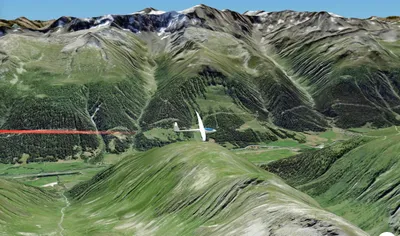Step 1: Proving Grounds
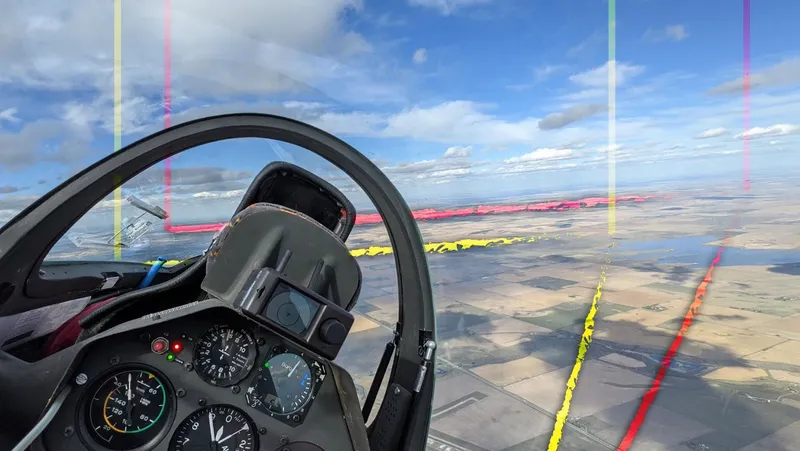
A team of Canadian pilots (Casey Brown, Christopher Gough, and Patrick McMahon) have developed the 'Proving Grounds' system, which many clubs in North America and Europe are adopting. The group is passionate about finding ways to transition beginner pilots to cross-country pilots and strengthen gliding clubs. We have been in touch with Patrick for some time and his team has given valuable advice which helped us develop WeGlide Segments and Local Competitions. Local Competitions are a new way for you and your club mates to compete on predefined tasks and instantly see the results.
Here Patrick tells us more about Proving Grounds and how it can help your club members develop solid cross-country skills.

Do you remember the first time you flew beyond final glide of your home gliderport?
Did it feel rebellious, liberating, terrifying? Did you push on, or withdraw to regroup? Can you remember what you wish you had known then that you know now?
The club I was flying at when I started testing the limits of final glide had some XC pilots but didn’t have a scalable way to create new XC pilots. For those interested in chasing XC performers, we worked more on an “ask forgiveness, not permission” basis to using gliders for what they are designed to do - soar. Long distances, high speeds.
I managed to stick around where so many colleagues who had training success did not. Without a connection to the thrill, limitless challenge, and relative ease of XC soaring, people fade away.
Introducing the Proving Grounds. Proving Grounds intends to solve the common gliding club challenge of retention with a customized, scalable, low maintenance system to develop and support a XC culture starting with the novice or solo pilot. A pilot who successfully works through the Proving Grounds will have established the vocabulary of soaring, found comfort with tools in the cockpit including instruments and a moving map/flight computer, have made en route alternate landing decisions, started posting flights on WeGlide, and have instilled in themselves and their club that they can fly XC safely!
Proving Grounds is a member retention system. To take the novice glider pilot and graduate them to become a soaring pilot and create more friendly competition at the airfield and in the clubhouse.
The system works around a few key components - fixed tasks, automated scoring without a login, and social competition/recognition. It is in use at dozens of gliding operations in North America with growing interest in Europe (especially the Netherlands) and New Zealand, with more nations and continents expressing interest in the effective program and working on their tasks!
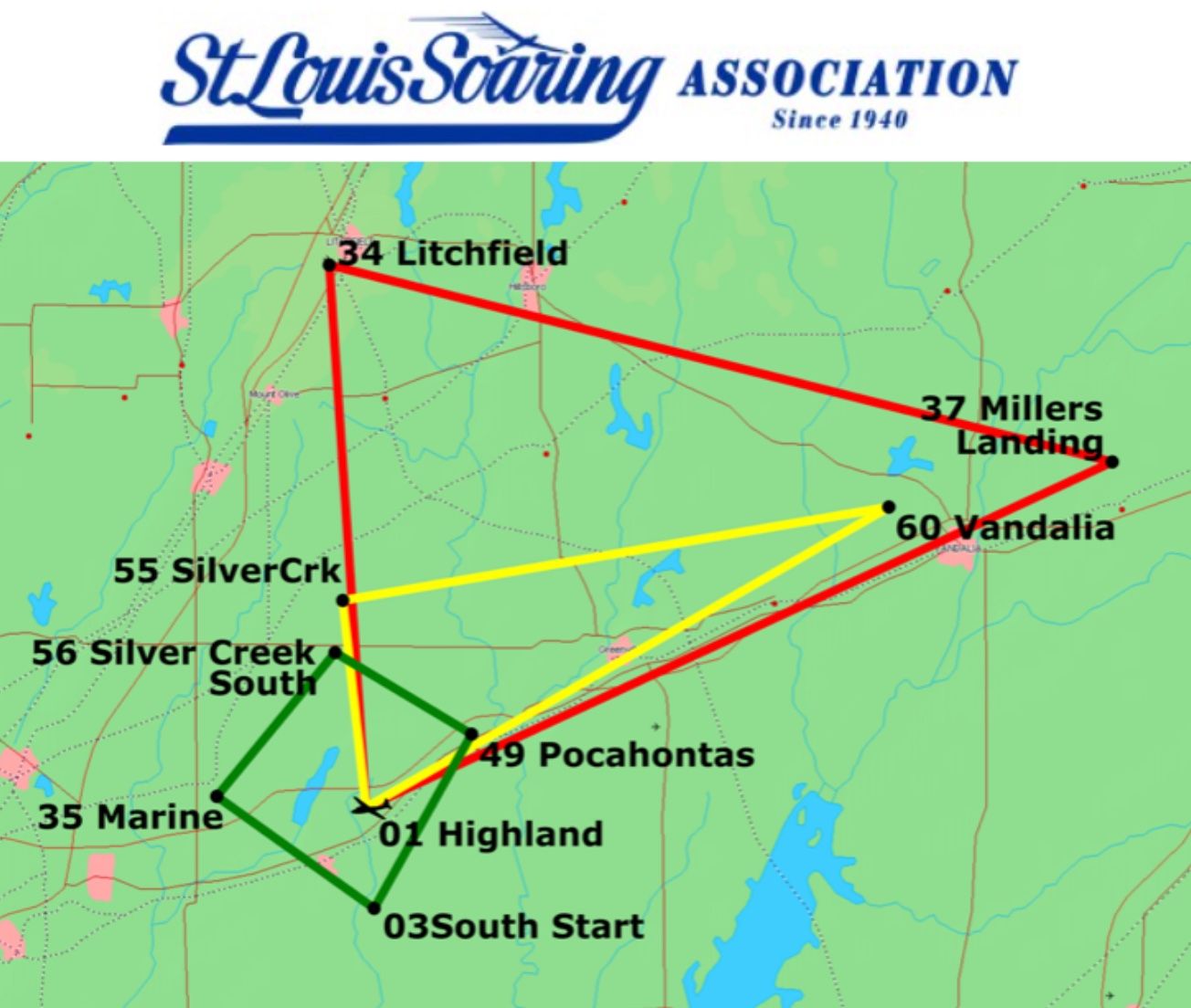
Fixed Tasks
The Proving Grounds is customized to each location. Tasks are defined with a consideration of any airspace limitations, terrain considerations, and over areas prone to good, safe soaring. Three tasks typically define the Proving Grounds.
The first task is the most popular, most accessible, and most critical. Typically clubs set up a rhombus around the home airfield with the points approximately 12 - 14km from home. This creates a ~50km task commonly called a “Racetrack”. Pilots are always within final glide to the home airport if they maintain about 300m above circuit height.
The next two tasks will require climbs away from the home airfield, and we encourage clubs to build them on top of each other - 100km and 150km to create more opportunities for success and familiarize all participants with terrain features, alternate airports, etc.
A novice pilot who can complete an approximately 150km task, with 2km radius turnpoints really should have demonstrated to themselves and the club that they have what it takes to be a capable XC pilot and might warrant enhanced permissions beyond the limitations of the Proving Grounds.
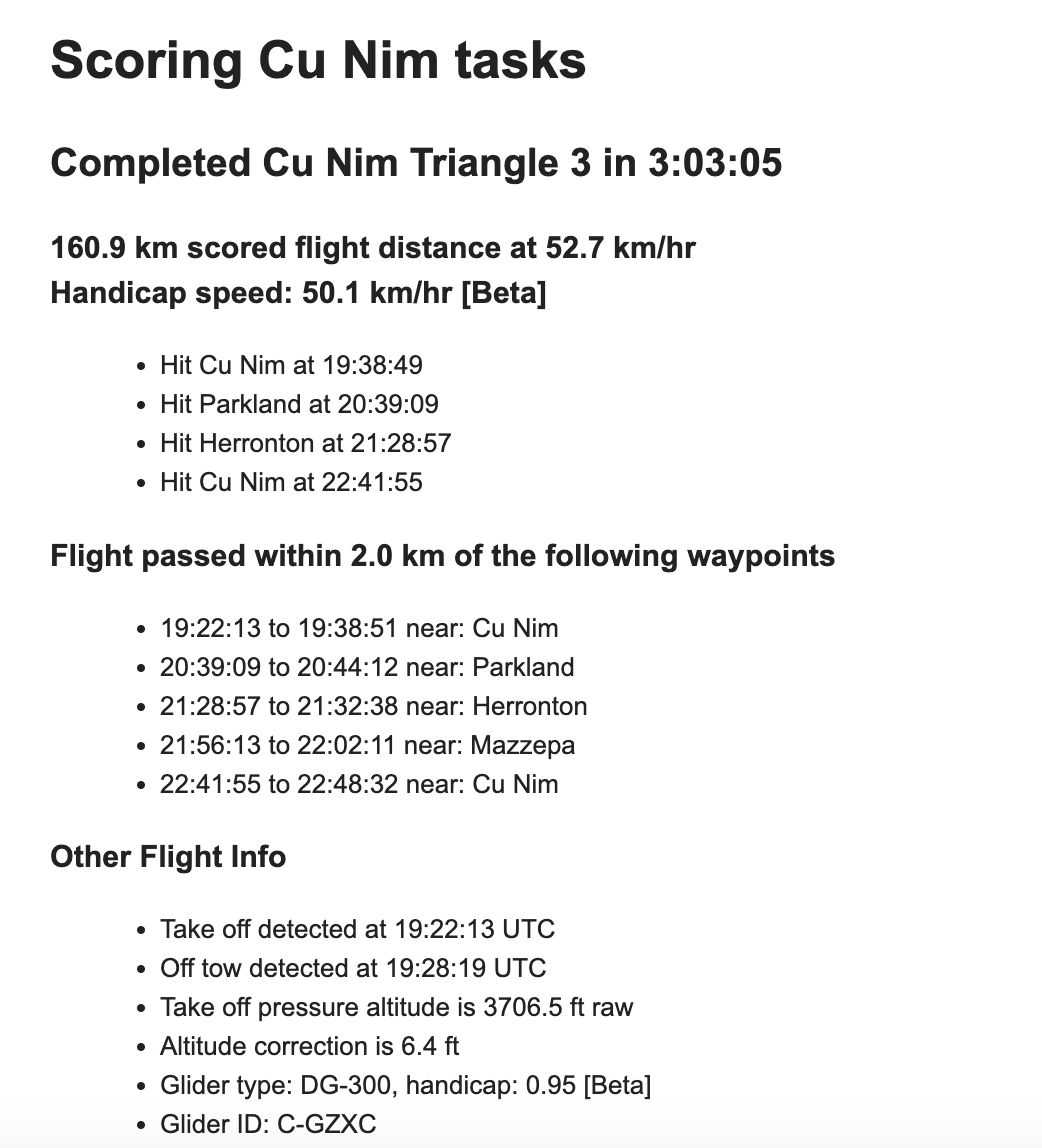
Automated Scoring
The target participant in the Proving Grounds may not have a WeGlide profile (yet). Through participation, they are likely to learn about loggers and IGC files. Recognizing this, Proving Grounds requires no login or web portal to participate - it is as low of a barrier to entry as possible. Pilots simply email their IGC file to an email address configured for their club that processes the trace, scores it against the local tasks, and emails back a summary result - pass or fail, time, distance, raw and handicapped speed along with some additional information.
This is the key to the system and what makes it so scalable. The results are immediate, and no member has to open a more detailed analysis. Of course, there’s lots to learn from a deeper analysis, and that’s all part of the vocabulary and ancillary benefits of the Proving Grounds in supporting the XC culture at the club.
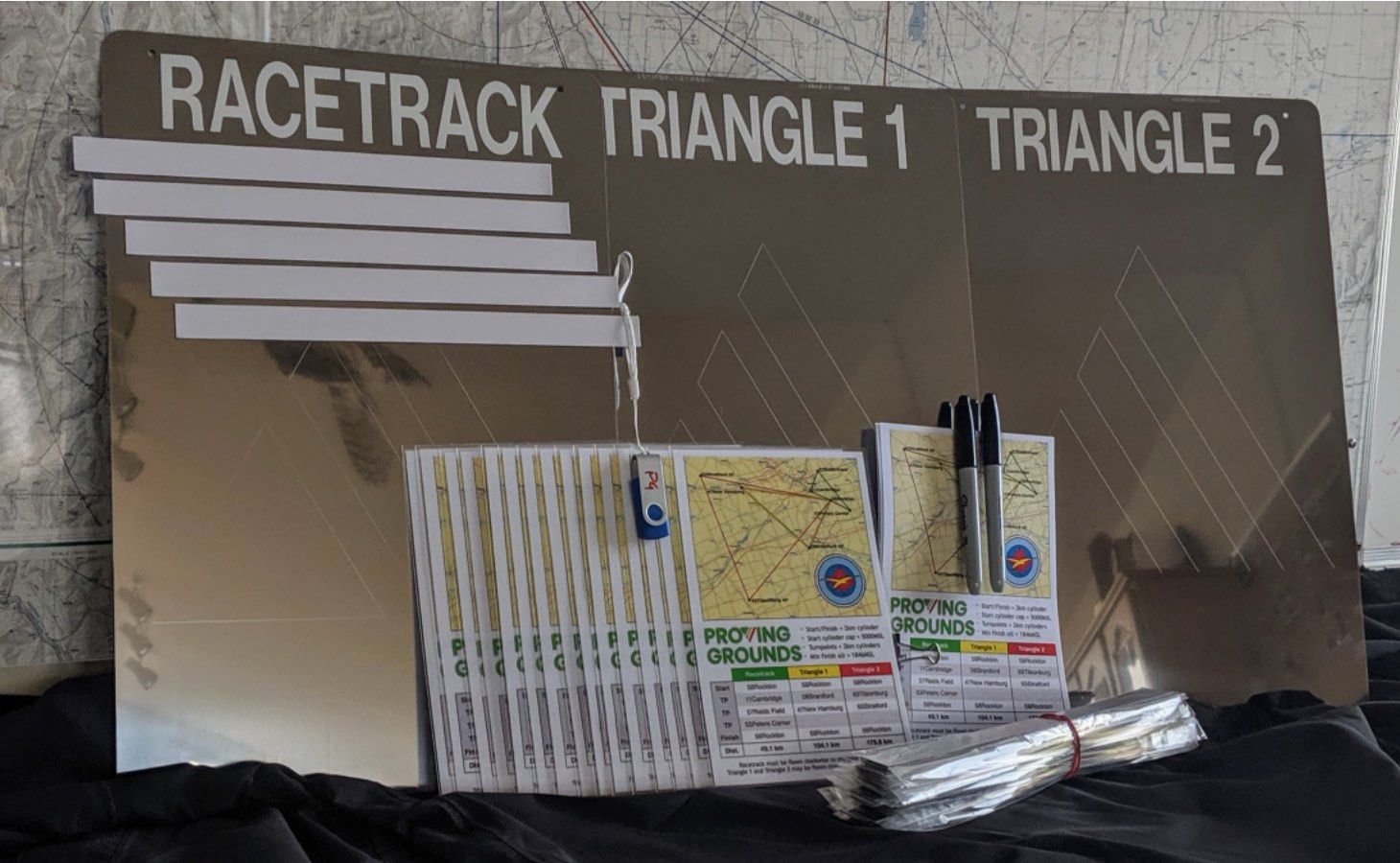
Share the Result
Of course, Proving Grounds pilots should be encouraged to post their tasks on WeGlide, but the Proving Grounds provides a way to enhance the clubhouse with beautiful ‘trophy boards’ and strips of magnetic whiteboard material. A pilot that’s successfully flown a Proving Grounds task will fill out a slip with the crew name, glider and competition ID, handicapped average speed, and the date, then reorganize other slips so they find their place among peers striving for the fastest time on these tasks that quickly become cornerstones of pilot development.
We hope you’ll see in Proving Grounds what many XC champions have seen in the system. A simple and systematic way to develop XC soaring capacity without obliging already overburdened members with more responsibilities. It is intended to be an on-ramp to the wonderful sport we celebrate when we post traces on WeGlide - showcasing the rich tapestry of the sport.
Recent new features of WeGlide leverage some of the best parts of Proving Grounds, but for the tenured pilot, not the novice pilot. ‘Segments’ define the most spectacular soaring courses in the world. F1 has Spa, Monza, Yas Marina, soaring has Alpe-Adria Express, The Titan, Appalachians…
Objectively small tasks, monumental personal victories, and a lifelong love of the sport. This is the best of the Proving Grounds in helping clubs retain more members and enhance their XC capacity. It working and you might consider it for your club!
If you’re interested in configuring Proving Grounds for your club, please reach out. National support remains available for Canadian and American clubs from the Soaring Association of Canada and the Soaring Society of America respectively. Costs are modest - a few aerotows to configure the tasks, the software, and the physical components of the trophy kit. It’s less than an aerotow annually to maintain. It is quite possibly the best investment you will ever make in your club's longevity and an outcome-oriented culture.


